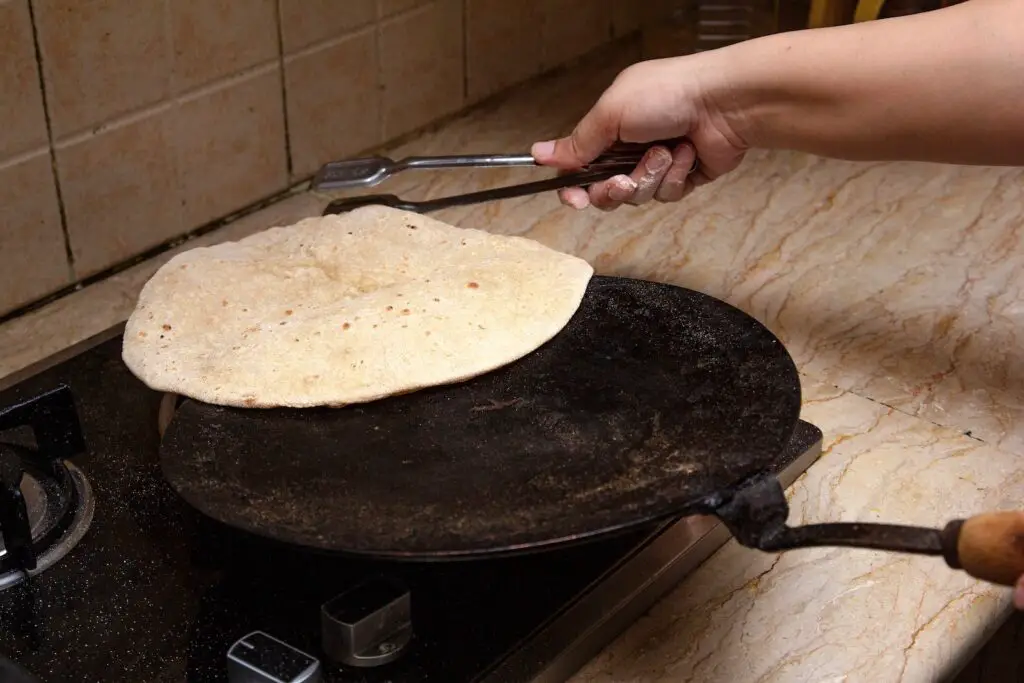
Fettuccine Alfredo, a classic Italian pasta dish, is a creamy and indulgent combination of tender fettuccine noodles tossed in a rich sauce made with butter, cream, and Parmesan cheese. This beloved comfort food is a favorite among pasta enthusiasts and never fails to satisfy cravings for a hearty and flavorful meal. If you happen to have leftovers or want to prepare a larger batch for future enjoyment, freezing Fettuccine Alfredo is a practical option. Freezing this dish allows you to preserve its flavors and textures, ensuring that you can enjoy a taste of Italy whenever you desire. In this guide, we will explore the best practices for freezing Fettuccine Alfredo, including proper cooling, packaging, and thawing techniques, so you can savor a delicious plate of this classic pasta dish at your convenience. Join us as we dive into the world of freezing Fettuccine Alfredo and discover how to extend the shelf life of this comforting favorite, allowing you to indulge in its creamy goodness whenever the craving strikes.
Here are the simple steps to freeze fettuccine alfredo:
Step 1: Prepare the Fettuccine Alfredo
Before freezing your Fettuccine Alfredo, it’s important to ensure that it is freshly cooked and properly prepared. This step is crucial for maintaining the taste and quality of the dish when you reheat it later. Here’s how to prepare your Fettuccine Alfredo for freezing:
- Freshly cooked Fettuccine Alfredo: If you’re making Fettuccine Alfredo specifically for freezing, follow your favorite recipe and cook the pasta until it is al dente. Prepare the creamy Parmesan cheese sauce and combine it with the cooked fettuccine noodles. Ensure that the sauce is well-distributed throughout the pasta.
- Leftover Fettuccine Alfredo: If you have leftover Fettuccine Alfredo from a previous meal, it can be an excellent option for freezing. Before freezing, make sure the leftover pasta has been properly stored in the refrigerator and hasn’t exceeded its recommended storage time. If the pasta has been sitting out at room temperature for more than two hours, it’s best to discard it to prevent any potential foodborne illnesses.
Whether you’re using freshly cooked Fettuccine Alfredo or leftovers, it’s important to ensure that the pasta is properly cooked and the sauce is evenly distributed. This will ensure that the flavors are well-balanced and the dish freezes well.
Step 2: Portion the Fettuccine Alfredo
After preparing your Fettuccine Alfredo, the next step is to portion it into individual or family-sized servings before freezing. Portioning the pasta allows for easier thawing and reheating, as you can take out only the amount you need without thawing the entire batch. Here’s how to portion your Fettuccine Alfredo:
- Determine serving sizes: Consider how much Fettuccine Alfredo you and your family typically consume in one meal. If you’re freezing for individual servings, think about the portion size that would be suitable for one person. This can vary depending on personal preferences, appetites, and dietary needs.
- Use freezer-safe containers or bags: Select airtight, freezer-safe containers or resealable freezer bags for portioning the Fettuccine Alfredo. Ensure that the containers or bags are clean and in good condition.
- Divide the Fettuccine Alfredo: Scoop or spoon the Fettuccine Alfredo into the containers or bags, dividing it according to your desired portion sizes. Leave some headspace in the containers or bags to allow for expansion during freezing. It’s generally a good idea to leave about an inch of space at the top.
- Flatten for easier storage: If you’re using resealable freezer bags, consider flattening the bags after sealing them. This will help save space in the freezer and make it easier to stack and organize the frozen portions. Make sure to remove as much air as possible from the bags before sealing them completely.
By portioning the Fettuccine Alfredo before freezing, you can conveniently thaw and reheat only the amount you need for each meal, reducing waste and preserving the quality of the remaining portions. It also allows for more flexibility in meal planning and portion control. Once the Fettuccine Alfredo is portioned, you can proceed to the next step: cooling it before freezing.
Step 3: Cool the Fettuccine Alfredo
After portioning the Fettuccine Alfredo, it’s essential to allow it to cool completely at room temperature before placing it in the freezer. This step is crucial to prevent condensation and ice crystals from forming, which can affect the texture and quality of the pasta when it’s frozen. Here’s why cooling is important and how to do it:
- Preventing condensation: When hot food is immediately placed in the freezer, the temperature difference can cause moisture in the air to condense on the surface of the food. This can lead to ice crystals forming, which can result in freezer burn and a degradation of the pasta’s texture and taste.
- Cooling at room temperature: To cool the Fettuccine Alfredo, leave the portioned containers or bags on the kitchen counter or any cool, dry surface. Avoid placing them near heat sources or in direct sunlight. Let the pasta cool for about 1 to 2 hours or until it reaches room temperature. This allows excess heat to dissipate and reduces the chances of condensation during freezing.
- Stir occasionally: During the cooling process, you can gently stir the Fettuccine Alfredo occasionally to distribute any residual heat and help it cool more evenly. Be careful not to over-stir, as this can cause the pasta to clump together.
- Patience is key: It’s important to exercise patience and allow the Fettuccine Alfredo to cool completely before transferring it to the freezer. Rushing this step may lead to the formation of condensation, which can affect the quality of the frozen pasta.
Once the Fettuccine Alfredo has cooled down completely, you can move on to the next step: packaging it for freezing. By taking the time to cool the pasta properly, you’ll help preserve its texture and flavor, ensuring a delicious meal when you decide to enjoy it in the future.
Step 4: Package the Fettuccine Alfredo
After the Fettuccine Alfredo has cooled down completely, it’s time to pack it for freezing. Proper packaging is crucial to protect the pasta from freezer burn and maintain its quality during storage. Here’s how to package the Fettuccine Alfredo:
- Choose freezer-safe containers or bags: Select airtight, freezer-safe containers or resealable freezer bags specifically designed for long-term freezing. Ensure that the containers or bags are clean and in good condition to maintain the integrity of the pasta.
- Portion the Fettuccine Alfredo: Take each portion of the cooled Fettuccine Alfredo and place it in a separate container or bag. If you’re using bags, consider flattening them to save space in the freezer. For containers, leave some headspace at the top to accommodate expansion during freezing.
- Remove excess air: To prevent freezer burn, it’s essential to remove as much air as possible from the containers or bags. For bags, seal them most of the way, leaving a small opening. Gently press out the air while slowly sealing the remaining part of the bag. If using containers, press a sheet of plastic wrap directly onto the surface of the pasta before sealing with the lid to minimize air contact.
By using airtight containers or bags and removing excess air, you create a protective barrier around the Fettuccine Alfredo, minimizing the risk of freezer burn and maintaining its quality. Proper packaging ensures that the pasta remains flavorful and appetizing when you’re ready to thaw and reheat it. With the Fettuccine Alfredo packaged, you can proceed to the next step: storing it in the freezer.
Step 5: Label and Date the Packages
Once the Fettuccine Alfredo is properly packaged for freezing, it’s important to label each package with relevant information. Labeling the packages with the contents and the date of freezing serves as a helpful reminder and ensures you can easily identify the Fettuccine Alfredo in the freezer. Here’s why labeling is important and how to do it:
- Easy identification: When you have multiple items stored in the freezer, labeling the packages allows you to quickly identify the Fettuccine Alfredo without having to open each container or bag. This saves time and helps maintain the organization of your freezer.
- Storage time tracking: By including the date of freezing on the label, you can keep track of how long the Fettuccine Alfredo has been stored in the freezer. This information is important for maintaining food safety and quality. It helps you determine the recommended storage duration and ensures you consume the pasta within a suitable time frame.
- Permanent marker usage: Use a permanent marker to write the information directly on the container or bag. Make sure to write clearly and legibly to avoid any confusion. If you’re using bags, write on a section of the bag that won’t be peeled off or torn easily.
- Labeling details: Include the contents, which in this case is “Fettuccine Alfredo,” to identify the package’s contents at a glance. Additionally, write the date of freezing to provide a reference point for the storage duration. For example, you can write “Fettuccine Alfredo – Date of Freezing: MM/DD/YYYY” on each package.
By labeling and dating the packages, you can maintain an organized freezer and easily keep track of the storage time of your Fettuccine Alfredo. This information ensures that you consume the pasta within the recommended timeframe for the best quality and safety. With the packages labeled, you’re ready to store the Fettuccine Alfredo in the freezer for future use.
Step 6: Freeze the Fettuccine Alfredo
After properly labeling and dating the packages of Fettuccine Alfredo, it’s time to place them in the freezer for freezing. This step is crucial for preserving the pasta’s quality and ensuring it stays fresh until you’re ready to enjoy it. Here’s how to freeze the Fettuccine Alfredo:
- Placement in the freezer: Find a suitable spot in your freezer to store the packaged Fettuccine Alfredo. Ensure that the area is clean and free from any other strong-smelling foods that could potentially affect the pasta’s flavor.
- Single-layer arrangement: Place the packages in a single layer on the freezer shelves or in freezer baskets. This allows for even freezing and helps maintain the pasta’s shape and texture. Avoid stacking the containers or bags on top of each other at this stage.
- Allow for solid freezing: Leave the Fettuccine Alfredo packages in the freezer without disturbing them until they are frozen solid. This typically takes around 4 to 6 hours, but freezing times may vary depending on the thickness of the pasta and the temperature of your freezer.
- Avoid stacking until frozen: It’s important not to stack the packages until they are completely frozen. Stacking unfrozen packages can lead to uneven freezing, squished pasta, and potential cross-contamination. Once the Fettuccine Alfredo is frozen solid, you can stack the containers or bags to save space in the freezer if desired.
By placing the packaged Fettuccine Alfredo in the freezer in a single layer and allowing them to freeze solid without stacking, you ensure even freezing and preserve the pasta’s texture and shape. It’s important to follow these steps to maintain the quality of the frozen Fettuccine Alfredo. With the pasta safely in the freezer, you can move on to the next step: storing it for long-term preservation.
Step 7: Store in the Freezer
Once the Fettuccine Alfredo packages are frozen solid, it’s time to store them in the freezer for long-term preservation. Proper storage conditions in the freezer are crucial for maintaining the quality, taste, and freshness of the pasta. Here’s how to store the Fettuccine Alfredo in the freezer:
- Find the coldest part of the freezer: Identify the coldest section of your freezer, usually towards the back or bottom. This area maintains a more consistent temperature, which is ideal for preserving frozen foods.
- Maintain a temperature of 0°F (-18°C) or below: It’s important to ensure that your freezer is set to a temperature of 0°F (-18°C) or below. This temperature range helps prevent the growth of bacteria and maintains the quality of the Fettuccine Alfredo during storage.
- Arrange the packages for easy access: Place the frozen Fettuccine Alfredo packages in the chosen area of the freezer, arranging them in a way that allows for easy access. You can stack the containers or bags if desired, making sure they are secure and won’t topple over.
- Avoid temperature fluctuations: Try to minimize temperature fluctuations in the freezer by keeping the freezer door closed as much as possible. Rapid changes in temperature can affect the texture and quality of the frozen Fettuccine Alfredo.
By storing the Fettuccine Alfredo in the coldest part of the freezer at a temperature of 0°F (-18°C) or below, you ensure optimal preservation and maintain the best quality and freshness. Following these storage guidelines will allow the pasta to remain in excellent condition until you’re ready to thaw and reheat it for a delicious meal.
How long can fettuccine alfredo last in the freezer?
Fettuccine Alfredo can last in the freezer for about 2 to 3 months without significant loss in quality. Properly stored and sealed in airtight containers or bags, it can potentially last up to 6 months, but the flavor and texture may gradually deteriorate over time. It is advisable to consume the frozen Fettuccine Alfredo within the recommended time frame for the best taste and freshness.
Step 8: Thaw and Reheat
When the time comes to enjoy the frozen Fettuccine Alfredo, proper thawing and reheating techniques are essential to ensure the pasta retains its texture and flavors. Here’s how to thaw and reheat the Fettuccine Alfredo:
- Transfer to the refrigerator: Remove the desired portion of frozen Fettuccine Alfredo from the freezer and transfer it to the refrigerator. Place the package on a plate or in a shallow container to catch any potential condensation. Allow the pasta to thaw overnight or for approximately 8 to 12 hours. Thawing in the refrigerator helps maintain the pasta’s texture and minimizes the risk of bacterial growth.
- Check for complete thawing: Before reheating, ensure that the Fettuccine Alfredo has completely thawed. The pasta should be pliable and no longer frozen in the center. If there are any frozen portions, you may need to let it thaw for a bit longer.
- Reheating on the stovetop: To reheat the Fettuccine Alfredo on the stovetop, place it in a saucepan over low to medium heat. Add a splash of water or milk to the pan to prevent the sauce from drying out. Stir occasionally to distribute the heat and prevent sticking. Continue heating until the pasta reaches the desired temperature. Be careful not to overcook the pasta, as it can become mushy.
- Reheating in the microwave: Alternatively, you can reheat the Fettuccine Alfredo in the microwave. Transfer the thawed pasta to a microwave-safe dish and cover it loosely to prevent splatters. Heat on medium power for short intervals, usually 1-2 minutes at a time. Stir the pasta between intervals to ensure even heating. Continue until the pasta is heated through.
By thawing the Fettuccine Alfredo in the refrigerator overnight and reheating it gently on the stovetop or in the microwave, you can bring the pasta back to its flavorful, creamy state. Remember to stir occasionally and avoid overcooking to maintain the pasta’s texture. Once reheated, you’re ready to serve and savor the delicious Fettuccine Alfredo once again.
Other related questions
Can you refreeze fettuccine alfredo?
It is generally not recommended to refreeze Fettuccine Alfredo once it has been thawed. The repeated freezing and thawing can affect the texture and quality of the pasta, leading to a loss in flavor and potential degradation. To maintain the best taste and texture, it is advisable to consume the thawed Fettuccine Alfredo within a reasonable time and avoid refreezing it.
How do I know if the fettuccine alfredo has gone bad after being frozen?
To determine if Fettuccine Alfredo has gone bad after being frozen, there are a few signs to look out for. These include a change in texture, such as becoming mushy or grainy, an off-putting odor, or the presence of ice crystals or freezer burn. If any of these indicators are observed, it is best to discard the Fettuccine Alfredo, as it may have deteriorated in quality and could potentially cause foodborne illness if consumed.
Can I freeze fettuccine alfredo with added ingredients like chicken or vegetables?
Yes, you can freeze Fettuccine Alfredo with added ingredients like chicken or vegetables. However, it’s important to consider the nature of the added ingredients. Cook the chicken or vegetables thoroughly before incorporating them into the Fettuccine Alfredo.
User
Can I freeze fettuccine alfredo that has already been garnished?
It is generally not recommended to freeze Fettuccine Alfredo that has already been garnished. Garnishes, such as fresh herbs or grated cheese, can lose their texture and freshness when frozen and thawed. For best results, freeze the Fettuccine Alfredo without the garnishes.
Can I freeze fettuccine alfredo meats added to it?
Yes, you can freeze Fettuccine Alfredo with chicken or other meats added to it. However, it’s important to consider the quality and texture of the meat after freezing and thawing. To freeze Fettuccine Alfredo with meats, ensure the dish is fully cooked.








